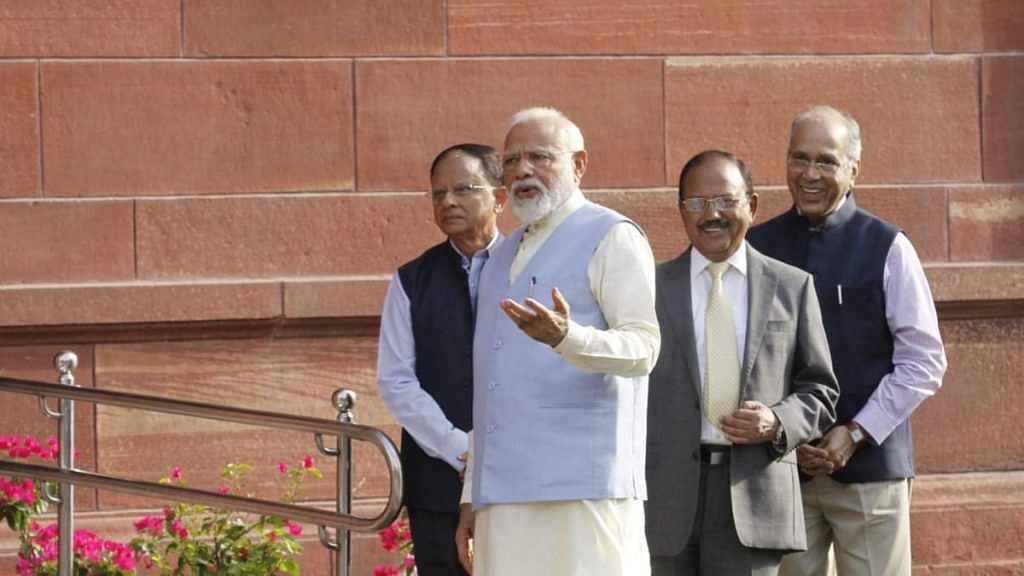New Delhi: Only one of the 89 secretaries posted at the Centre belongs to the Scheduled Castes (SC), while three belong to the Scheduled Tribes, latest government data tabled in Parliament shows.
None of the secretaries belong to the Other Backward Classes (OBCs), according to the data compiled by the Ministry of Personnel, Public Grievances and Pensions. A majority of the secretaries are from the Indian Administrative Service (IAS).
The representation of SC/ST/OBC officers in central government ministries/departments is lopsided even at the additional secretary, joint secretary and director levels. For instance, of the 93 additional secretaries in central government ministries, just six are SCs and five are STs, while there are no OBCs of this rank either.
Among the 275 joint secretaries, 13 (4.73 per cent) are SCs, nine (3.27 per cent) are STs and 19 belong to the OBC category.
The ministry maintains data for OBC officers from 1993 onwards, when reservations for that category was introduced. Since the Mandal Commission recommendations, the government had made 27.5 per cent reservation mandatory in government jobs for OBCs, 15 per cent for SCs and 7.5 per cent for STs.
ThePrint reached the Department of Personnel and Training for an official comment through telephone calls and e-mails but there was no response.
‘Higher age of entry’
Replying to an unstarred question posed by Trinamool Congress leader Dibyendu Adhikari in the Lok Sabha on 10 July, Jitendra Singh, the Minister of State for Personnel, said many officers belonging to the reserved categories often enter the service at higher ages, so a number of such officers retire from service by the time their batches are considered for empanelment to the post of additional secretary and secretary.
“As a result, their proportionate representation in higher positions in the government of India is comparatively lower. However, from amongst the reserved category officers available for consideration, efforts are made to give them as much representation as is possible,” Singh had said in his reply.
Also read: Modi govt is very ‘unstable’ for top IAS secretaries, transfers them too often and abruptly
‘Not allowed to reach the top’
However, Udit Raj, a former BJP MP belonging to the Scheduled Castes who once served as an Indian Revenue Service officer, alleged that more often than not, officers belonging to SC/ST category are targeted and not allowed to reach the top.
“Being a former IRS officer who is a Dalit, I can talk from experience. Frivolous complaints are levelled against officers belonging to the SC/ST category and there have been instances when their confidential reports have been spoiled by their bosses,” said Raj, who quit the BJP to join the Congress just before the Lok Sabha elections.
“I had protested against the under-representation of SCs, STs and OBCs in senior bureaucratic positions when I was in the BJP, but nobody is serious about addressing it. I paid the price for raising the issue,” he claimed.
Other reasons offered
A former IAS officer, who served as president of the IAS Association, told ThePrint that the lopsided representation is mainly on account of the fact that reservation does not apply while selecting officers for central deputation.
“Selection of secretary, additional secretary and joint secretary-level officers is made from the pool of officers who are empanelled for that particular post. If there isn’t an adequate number of officers belonging to the SC/ST/OBC categories in the pool, their number is obviously going to be smaller,” said the retired civil servant who did not want to be named.
A serving IAS officer, who belongs to the general category, said: “At times, senior IAS officers do not want to come to the Centre on deputation or the state government does not relieve them, resulting in a lesser number of SC/ST category officers in the upper echelons of government.”
Also read: Modi PMO studying plan to have ‘sectoral secretaries’ for better management of ministries
